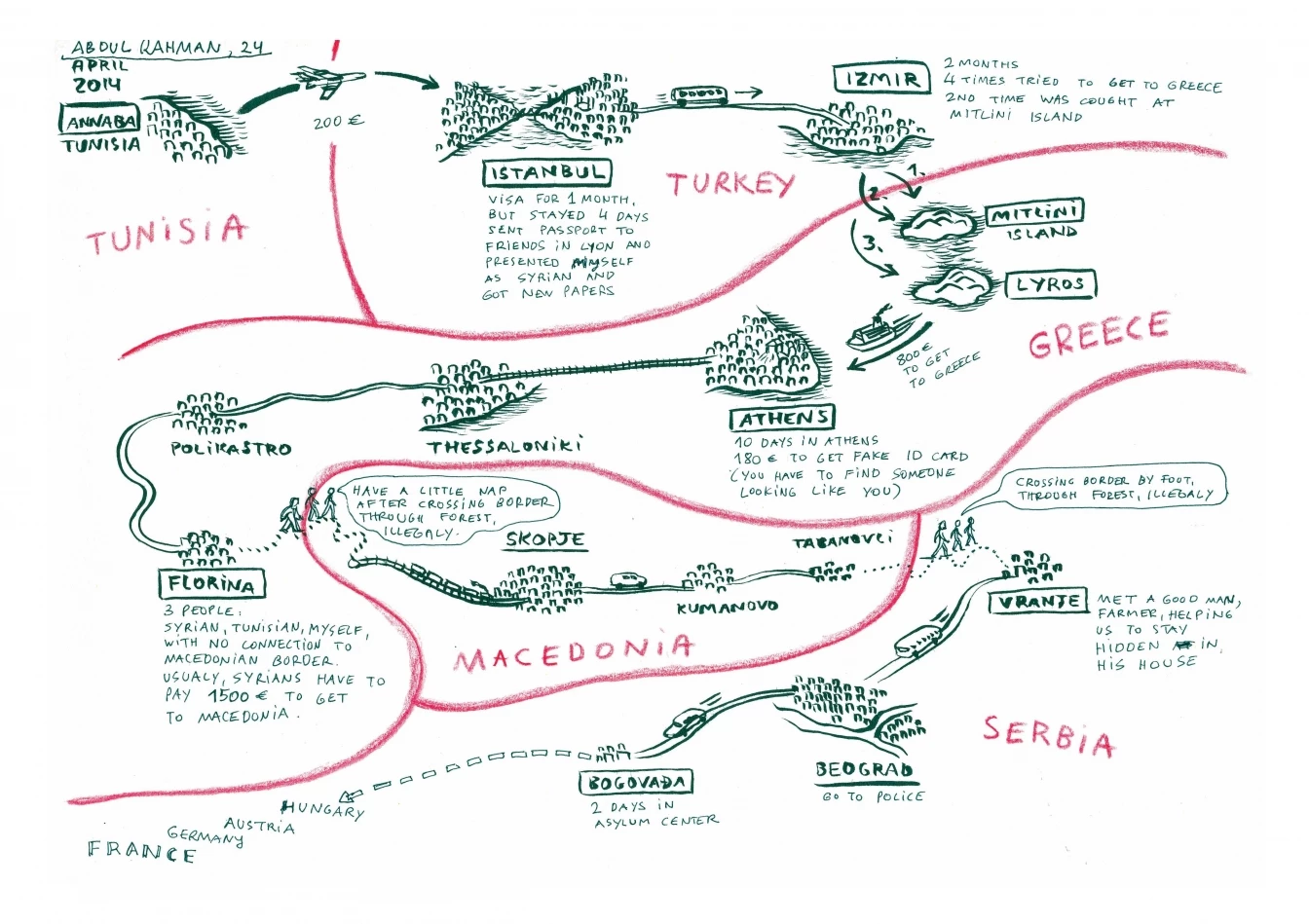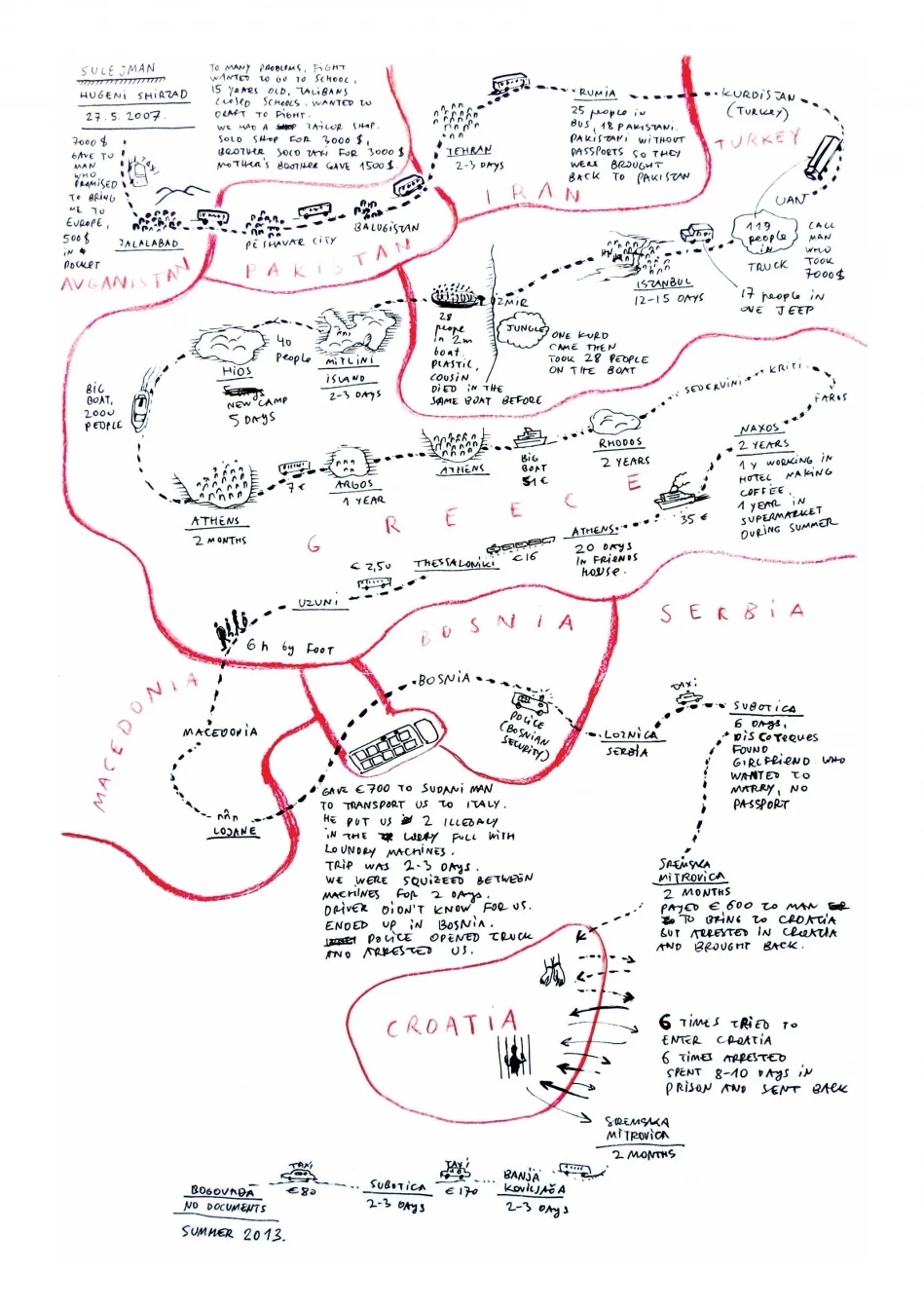
These maps were made during the work in asylum centre in Bogovadja, Serbia, 2013–15. For the first time maps were shown on the exhibition The Border is Closed held in the Museum of African Art in Belgrade, September 11 – December 7 2015.
In 2013, Group 484 invited several associates, artists, to work with asylum seekers in an asylum centre near the village Bogovađa, in the vicinity of Valjevo in Serbia. Several years before, Group 484 had collaborated with that asylum centre and others in many ways. The idea was to expand cooperation and introduce different research methods by working with asylum seekers thus developing new contents in their everyday life. The number of migrants in Serbia was not nearly as large as it is today, and that issue, except in the narrow circles of activists and individual organisations, was neither visible nor topical at the time.
In Bogovađa, we met people from Afghanistan, Pakistan, Somalia, Eritrea, Guinea, Senegal, Syria... They were spending days in the centre resting from their difficult journey. They reached this centre by reporting to the police station upon entering Serbia illegally and expressing their intention to seek asylum. We primarily did not want to perceive the migrants as victims, through the prism of humanitarian paternalism, which is often the case in art projects, but as courageous people who, by the very fact that they had decided to set out on such a journey, made a radical change in their life – fleeing wars, conflicts and poverty. Therefore, we were interested in when, how and where they had been travelling before we met them in the asylum centre. We asked twenty nine of them why they had embarked on such a journey, what troubles they had survived, how they had crossed the borders, how much they had paid the smugglers, about their experience with the police, with the people in the countries they had passed through. Together, we sketched the answers in the form of maps, in order to piece together their routes, which in some cases lasted up to seven years. Sometimes the maps lack detail, sometimes they are unclear, and sometimes they would skip parts of the journey. We wanted to avoid pathos and the illustration of their sufferings. We wanted to show them their routes factually. Thus we sought to draw attention to the lack of humane asylum policy in Europe, which has been especially evident in the last few dramatic months, with rising racism and ethno-nationalism of the "Christian Europe". We also found the maps extremely helpful later, during our work with high school students in Serbia, during which we talked about migration, asylum seekers and our attitude towards them. It was extremely important to be able to show the documents of this work with asylum seekers in the exhibition The Border is Closed at the Museum of African Art in Belgrade.
Today, more than ever, it is necessary to pose critical questions in different spaces about the current geopolitical situation in Europe and the changes this situation brings, since they have a major impact on our future. The museum is no exception, in fact, a museum as a common space where specific knowledge is created also becomes the space of active reflection, which may not only emancipate people, but also affirm perhaps somewhat forgotten ideals of humanity and solidarity.
This text was published in the exhibition catalogue The Border is Closed at The Museum of African Art in Belgrade in September 2015, at the peak of an exodus of migrants via the Balkan route.

These maps were made during the work in asylum centre in Bogovadja, Serbia, 2013–15. They were shown for the first time at the exhibition The Border is Closed held in the Museum of African Art in Belgrade, September 11 – December 7 2015.